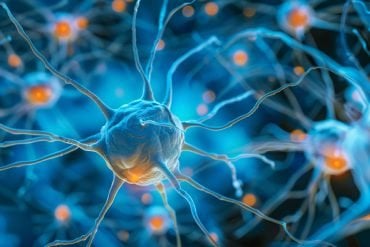Summary: Higher levels of olive oil in the diet may help mitigate aging-related diseases and increase life-span.
Source: University of Minnesota
Researchers at the University of Minnesota Medical School discover a potential new way in which diet influences aging-related diseases.
Doug Mashek, PhD, a professor in the Departments of Medicine and Biochemistry, Molecular Biology and Biophysics, leads a team of researchers who discovered that olive oil in the Mediterranean diet may hold the key to improving lifespan and mitigating aging-related diseases. Over the last eight years, with the help of multiple grants from the National Institutes of Health, their research findings were recently published in Molecular Cell.
Early studies on the diet suggested red wine was a major contributor to the health benefits of the Mediterranean diet because it contains a compound called resveratrol, which activated a certain pathway in cells known to increase lifespan and prevent aging-related diseases. However, work in Mashek’s lab suggests that it is the fat in olive oil, another component of the Mediterranean diet, that is actually activating this pathway.
According to Mashek, merely consuming olive oil is not enough to elicit all of the health benefits. His team’s studies suggest that when coupled with fasting, limiting caloric intake and exercising, the effects of consuming olive oil will be most pronounced.

“We found that the way this fat works is it first has to get stored in microscopic things called lipid droplets, which is how our cells store fat. And then, when the fat is broken down during exercising or fasting, for example, is when the signaling and beneficial effects are realized,” Mashek said.
The next steps for their research are to translate it to humans with the goal of discovering new drugs or to further tailor dietary regimens that improve health, both short-term and long-term.
“We want to understand the biology, and then translate it to humans, hopefully changing the paradigm of healthcare from someone going to eight different doctors to treat his or her eight different disorders,” Mashek said. “These are all aging-related diseases, so let’s treat aging.”
Source:
University of Minnesota
Media Contacts:
Kelly Glynn – University of Minnesota
Image Source:
The image is in the public domain.
Original Research: Open access
“Lipid Droplet-Derived Monounsaturated Fatty Acids Traffic via PLIN5 to Allosterically Activate SIRT1”. Doug Mashek et al.
Molecular Cell doi:10.1016/j.molcel.2019.12.003.
Abstract
Lipid Droplet-Derived Monounsaturated Fatty Acids Traffic via PLIN5 to Allosterically Activate SIRT1
Highlights
• MUFAs allosterically activate SIRT1 toward select substrates such as PGC-1α
• MUFAs enhance PGC-1α signaling in vivo in a SIRT1-dependent manner
• PLIN5 is a fatty acid binding protein that preferentially binds LD-derived MUFAs
• PLIN5 mediates MUFA signaling to control SIRT1/PGC-1α
Summary
Lipid droplets (LDs) provide a reservoir for triacylglycerol storage and are a central hub for fatty acid trafficking and signaling in cells. Lipolysis promotes mitochondrial biogenesis and oxidative metabolism via a SIRT1/PGC-1α/PPARα-dependent pathway through an unknown mechanism. Herein, we identify that monounsaturated fatty acids (MUFAs) allosterically activate SIRT1 toward select peptide-substrates such as PGC-1α. MUFAs enhance PGC-1α/PPARα signaling and promote oxidative metabolism in cells and animal models in a SIRT1-dependent manner. Moreover, we characterize the LD protein perilipin 5 (PLIN5), which is known to enhance mitochondrial biogenesis and function, to be a fatty-acid-binding protein that preferentially binds LD-derived monounsaturated fatty acids and traffics them to the nucleus following cAMP/PKA-mediated lipolytic stimulation. Thus, these studies identify the first-known endogenous allosteric modulators of SIRT1 and characterize a LD-nuclear signaling axis that underlies the known metabolic benefits of MUFAs and PLIN5.






